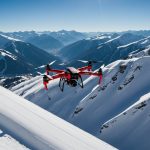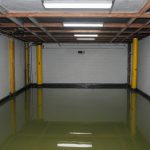Unveiling the Role of Machine Vision in Revolutionizing Automated Quality Control Systems
In the modern manufacturing landscape, the pursuit of perfection and efficiency has led to the integration of advanced technologies, with machine vision standing at the forefront. This article delves into the transformative impact of machine vision on automated quality control systems, exploring its applications, benefits, and future trends.
What is Machine Vision?
Machine vision, a subset of computer vision and artificial intelligence, involves the automated visual inspection of manufactured products using industrial cameras, lenses, and lighting. This technology enables rapid and accurate real-time inspection of components, ensuring 100% quality control on high-speed production lines[5].
Topic to read : Revolutionizing supply chain management: the impact of ai on boosting operational efficiency
How Machine Vision Works
The process begins with sensors detecting the presence of a product. Once detected, a light source is activated to illuminate the area, and a camera captures an image of the product or its components. The captured image is then converted into digital data by a frame-grabber and stored on a computer for analysis. The system software evaluates the digital file using specified criteria to identify any flaws. If a defect is found, the product fails inspection and is removed from the production line[5].
Applications of Machine Vision in Quality Control
Machine vision has diverse applications across various industries, each leveraging its unique capabilities to enhance quality control.
Additional reading : Enhancing digital security: the revolutionary potential of voice biometrics in protecting transactions
Defect Detection
One of the most critical applications of machine vision is defect detection. In the electronics manufacturing sector, for instance, machine vision systems can identify defects in soldering joints or micro-cracks on circuit boards. In the automotive industry, these systems can detect faulty paints, body panel damage, or badly fitted panels and assemblies[1].
Key Defect Detection Areas:
- Abrasion and Indentation: Machine vision can identify surface defects such as abrasions and indentations.
- Offset and Missing Parts: It can detect if parts are misaligned or missing.
- Soldering Joints: In electronics, it can inspect soldering joints for defects.
- Body Panel Damage: In automotive, it can identify damage to body panels.
Assembly Verification
Machine vision ensures that all components are correctly assembled and in the right sequence. This is particularly crucial in industries like aerospace and medicine, where safety and precision are paramount. For example, in aerospace, machine vision checks whether all elaborate components are adequately arranged to meet safety measures[1].
Predictive Maintenance
Beyond defect detection and assembly verification, machine vision can also be used for predictive maintenance. By analyzing images of machinery and equipment, it can predict potential failures, allowing for proactive maintenance and reducing downtime[5].
Benefits of Machine Vision in Automated Inspections
The integration of machine vision into quality control systems offers several significant benefits.
Enhanced Accuracy and Consistency
Human inspectors can tire and miss defects, but machine vision systems maintain a high level of precision consistently. This ensures that even slight deficiencies are not overlooked, enhancing overall product quality[1].
Increased Speed
Machine vision systems can operate at high speeds, complementing the pace of high-speed assembly lines. This real-time defect detection and correction capability significantly improves production efficiency[1].
Cost Savings
By catching defects early, machine vision reduces waste, cuts recalls, and eliminates costly rework procedures. It also reduces labor costs associated with manual inspections. Here is a breakdown of the cost savings:
Cost Savings Breakdown:
- Reduced Waste: Early defect detection minimizes waste.
- Lower Recall Costs: Fewer defective products reach consumers.
- Less Rework: Defects are corrected before products move to the next stage.
- Labor Costs: Automated inspections reduce the need for human inspectors.
Scalability
Machine vision systems can effectively learn about new products, making them highly adaptable for industries with frequently changing product lines. This scalability ensures that the system remains efficient even as production requirements evolve[1].
Future Trends in Machine Vision
As technology advances, machine vision is poised to become even more integral to manufacturing processes.
AI-Powered Robotics
The combination of machine vision with AI and robotics is leading to the development of almost completely autonomous inspection and repair systems. These systems can perform complex tasks without human intervention, further enhancing efficiency and accuracy[1].
Cloud and Edge Synergy
The integration of cloud computing for training and data storage, and edge computing for real-time inference directly on the assembly line, is becoming more prevalent. This synergy allows for faster and more efficient processing of data, enabling real-time decision-making[1].
Autonomous Learning
Next-generation machine vision systems will utilize reinforcement learning, reducing the need for human assistance in ensuring the accuracy of inspections. This autonomous learning capability will make the systems even more reliable and efficient[1].
Multimodal AI
The integration of machine vision with other AI abstractions, such as Natural Language Processing (NLP) and audio processing, will provide comprehensive coverage across full inspections. This multimodal approach will enhance the robustness and versatility of quality control systems[1].
Case Studies and Real-Life Applications
Several industries have already seen significant benefits from the implementation of machine vision.
Tesla’s Automated Manufacturing
Tesla uses machine vision to inspect cells and body panels in real-time, ensuring defect-free products and warranty compliance. This approach has significantly improved the quality and efficiency of their manufacturing process[1].
Foxconn’s Electronics Assembly
Foxconn employs machine vision to inspect circuit boards, detecting even the slightest defects in soldering. This has been critical in maintaining high-quality standards and reducing the risk of defective products reaching consumers[1].
Food Industry Inspection
In the food industry, companies like Nestlé and PackCheck use machine vision to monitor packaging seals and labels, ensuring freshness and minimizing packaging mistakes. PackCheck’s modular inspection platform, developed with MVTec Software GmbH, has been particularly effective in ensuring consistent packaging quality across multiple production lines[4].
Practical Insights and Actionable Advice
For manufacturers considering the implementation of machine vision, here are some practical insights and actionable advice:
Start with Clear Objectives
Define what you want to achieve with machine vision. Whether it is defect detection, assembly verification, or predictive maintenance, having clear objectives will help in designing an effective system.
Choose the Right Hardware and Software
Select cameras, lenses, and lighting that are suitable for your specific application. Ensure the software is compatible with your existing systems and can handle the data processing requirements.
Train and Validate the System
Train the machine vision system with a comprehensive dataset to ensure it can accurately identify defects and other issues. Validate the system through rigorous testing to ensure it meets your quality control standards.
Integrate with Existing Systems
Machine vision should be integrated with other systems such as conveyors and tracking controllers to ensure seamless operation. Use protocols like OPC UA for smooth interaction between hardware and software[4].
Machine vision is revolutionizing automated quality control systems by offering unparalleled accuracy, speed, and scalability. As technology continues to evolve, the integration of AI, cloud computing, and multimodal AI will further enhance the capabilities of machine vision. For manufacturers, embracing this technology is not just about improving quality and efficiency but also about staying competitive in a rapidly advancing industrial landscape.
Table: Comparison of Traditional Inspection vs. Machine Vision Inspection
| Criteria | Traditional Inspection | Machine Vision Inspection |
|---|---|---|
| Accuracy | Prone to human error | High precision and consistency |
| Speed | Slower and manual | Real-time and high-speed |
| Cost | Higher labor costs | Reduced labor and rework costs |
| Scalability | Limited adaptability | Highly adaptable to new products |
| Data Analysis | Manual data collection | Automated data collection and analysis |
| Decision Making | Human decision-making | Automated decision-making based on data |
Quotes from Industry Experts
- “Our customers are achieving their economic goals with the platform, such as improved efficiency, better employee utilization, and less waste. The inline quality inspection really checks every single product, resulting in a drastic reduction in the number of product recalls.” – de Jong, PackCheck[4]
- “Machine vision systems can automate many industrial inspections, including visual inspections for defects and problems, presence-absence checks, product type verifications, measures, and code readings.” – XenonStack[5]
- “The integration of machine vision with AI technology has extended its applications beyond the manufacturing sector, driven by the continuous evolution of artificial intelligence.” – Portwell Inc.[2]
By understanding and leveraging the power of machine vision, manufacturers can significantly enhance their quality control processes, ensuring higher product quality, reduced costs, and improved efficiency in the ever-evolving landscape of industrial automation.











